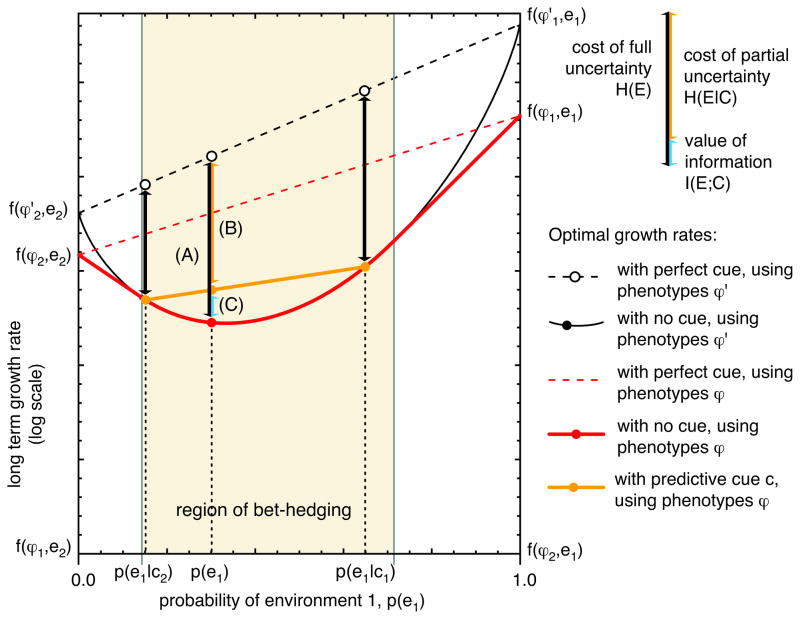Figure 3.
When the optimal strategy is to bet-hedge, both with and without a cue, the fitness value of information is equal to the mutual information between the cue and the environment. We calculate the value of a partially informative cue by looking at the reduction in growth rate, as in Figure 2, relative to a perfectly informed, unconstrained strategy. (A) With no cue at all, the cost of uncertainty is equal to the entropy of the environment H(E). (B) Once a particular cue ci has been observed then the reduction in growth rate is just the cost of uncertainty, H(E|ci). Averaging across the different cues, the reduction in growth rate for a strategy using a partially informative cue is simply the conditional entropy H(E|C). (C) The fitness value of information is, in this case, the amount by which the cue reduces uncertainty about the environment — that is, exactly the mutual information between the cue and the environment (see Equation 18.)

